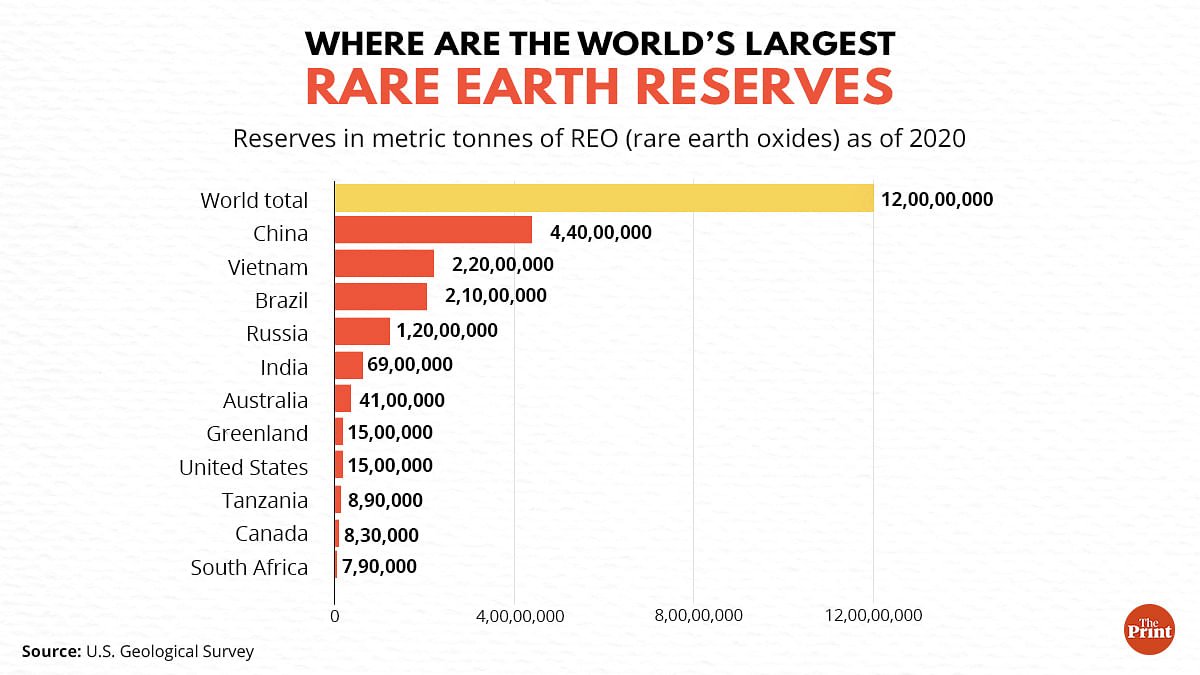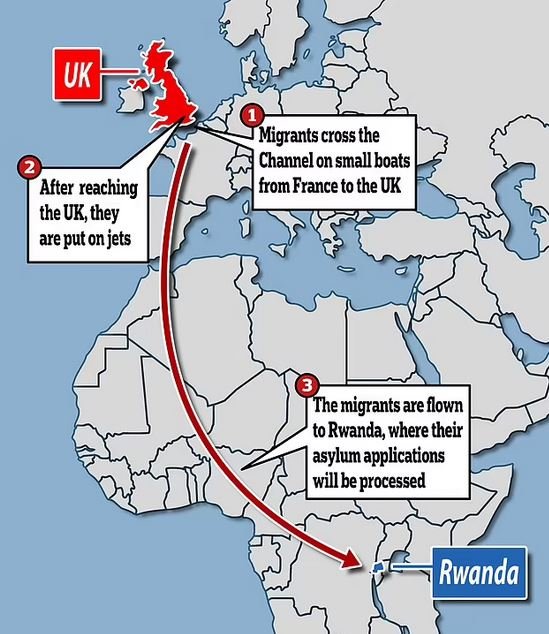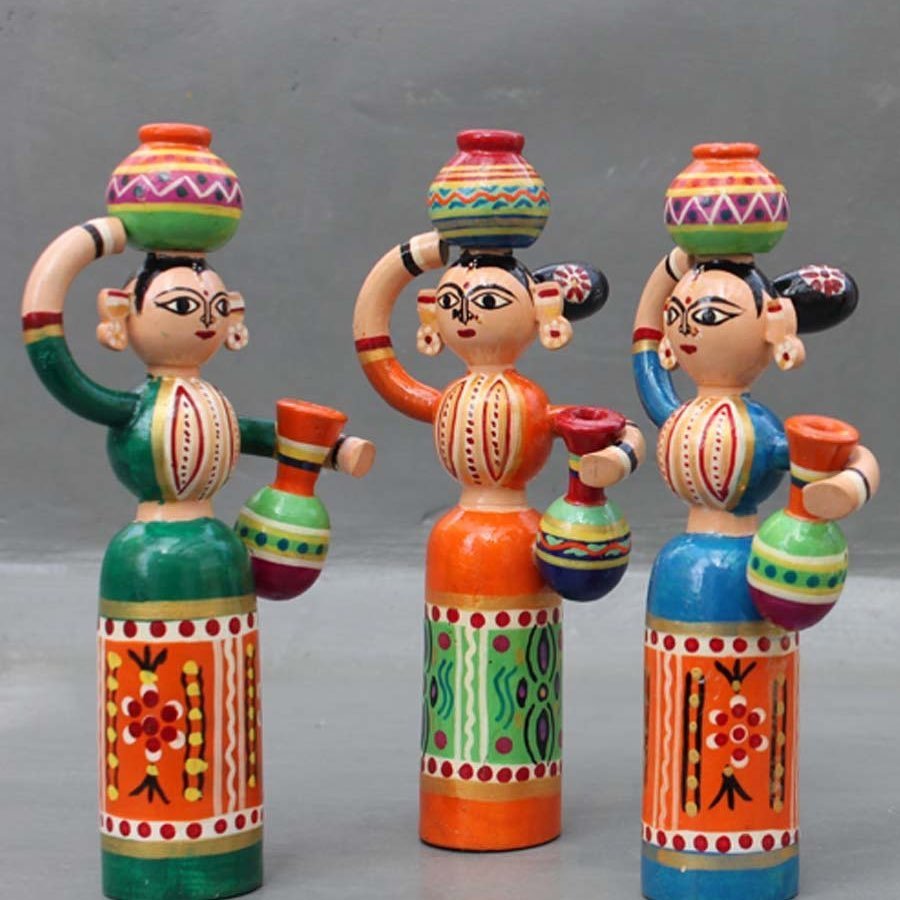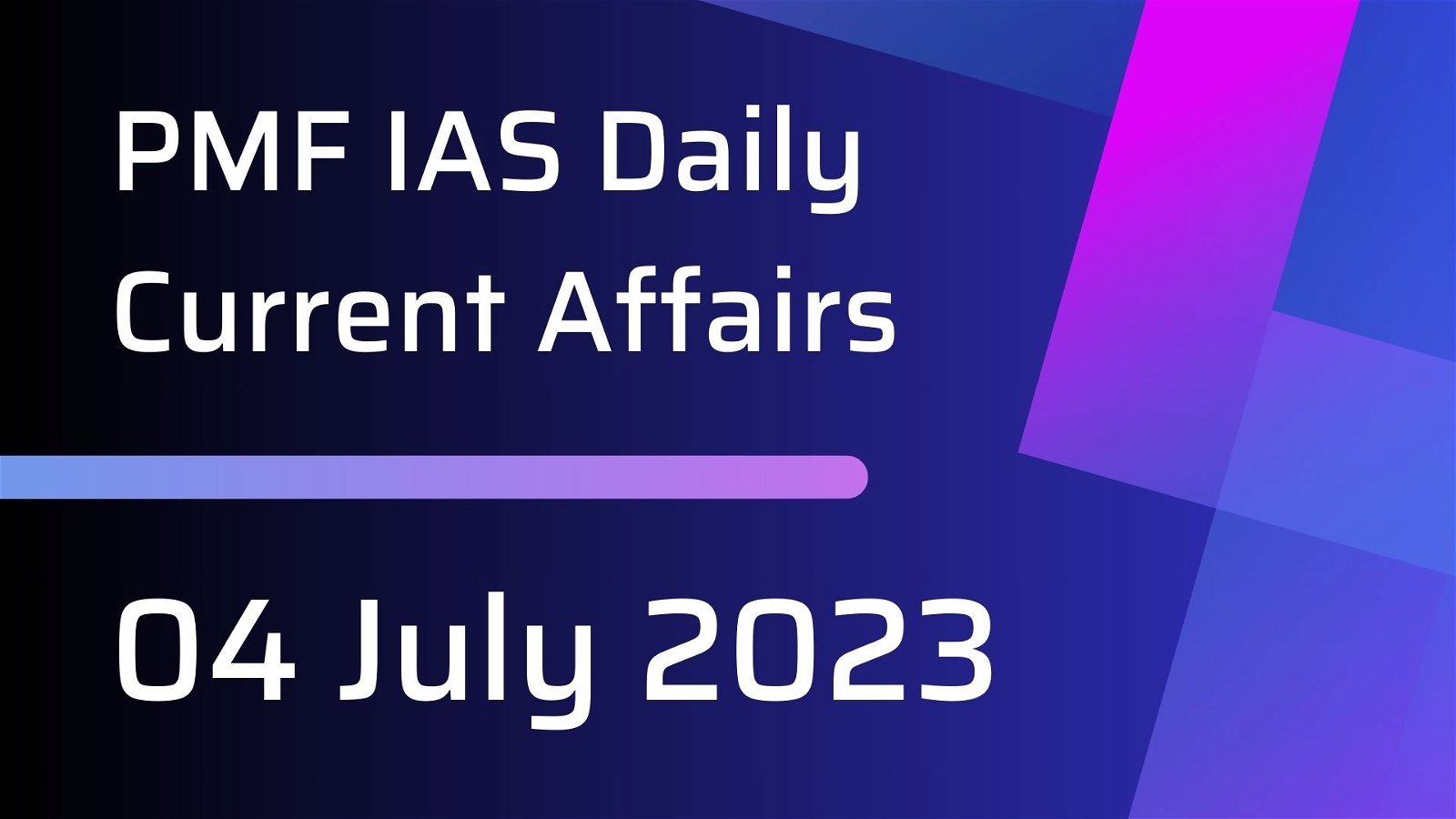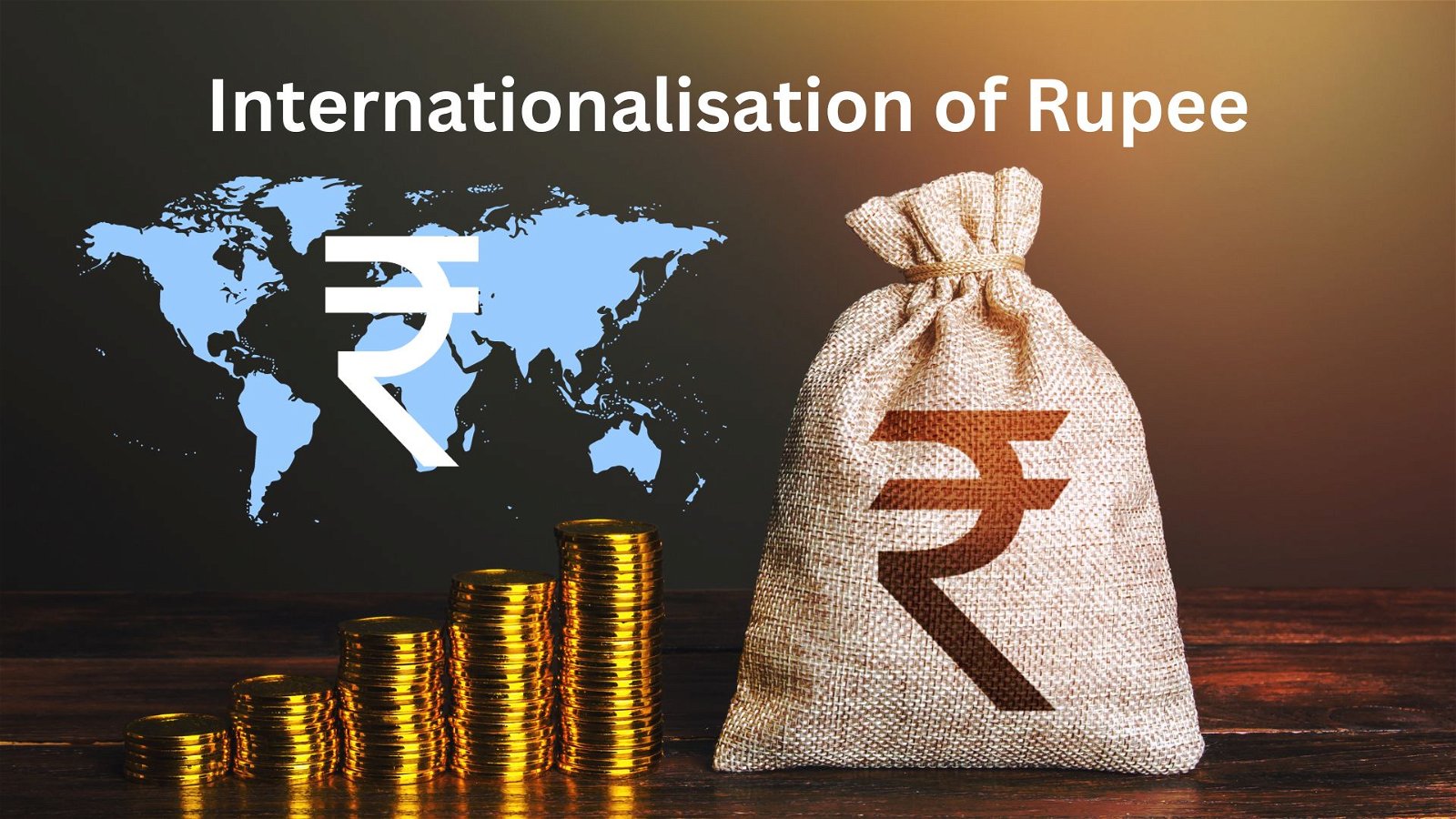
Current Affairs September 27, 2023: Raja Rammohan Roy, Vehicle Scrapping Policy, Zonal conference, Review Petition, Phosphorus Issue, Circular Water Economy, Angel Tax, RoDTEP, Microbiome, Copyright
Subscribers of "Current Affairs" course can Download Daily Current Affairs in PDF/DOC
Subscribe to Never Miss an Important Update! Assured Discounts on New Products!
Must Join PMF IAS Telegram Channel & PMF IAS History Telegram Channel
{GS1 – MIH – Personalities – 2023/09/27} Raja Rammohan Roy
- Context (IE): The Ministry of Culture paid tribute to Raja Rammohan Roy on his death anniversary.
- Raja Rammohan Roy is regarded as the first great leader of modern India.
- In 1818, he started the campaign against the practice of sati.
- He believed that the philosophy of Vedanta was based on the principle of reason.
- He criticised:
- Idolatry, Polytheism, Rigidity of caste
- The subjugation of women, Polygamy, the practice of Sati, child marriage
- Meaningless rituals and superstitions
- Exploited by corrupt priests
- Blind reliance on the past
- He argued for:
- Monotheism
- Abolition of Sati
- Widow remarriage
- Right of inheritance and property to women.
- Rational and scientific approach
- Modern education for both men and women.
Journals
- He was a pioneer of Indian journalism. He brought out journals in Bengali, Persian, Hindi, & English:
- Sambad Kaumudi (Bengali)
- Mirat–ul-Akbar (Persian)
Modern education
- He helped David Hare in establishing a Hindu college in 1817.
- He started an English school in Calcutta in 1817.
- In 1825, he established a Vedanta College.
Organisations
- In 1814, he started Atmiya Sabha.
- In 1828, he founded the Brahma Sabha, later known as the Brahmo Samaj, to purify Hinduism and preach monotheism.
Books
- In 1809, he wrote in Persian Gift to Monotheists, arguing against belief in many gods.
- In 1820, he published his Precepts of Jesus, in which he tried to separate the moral and philosophical message of the New Testament.
{GS2 – MoRTH – Schemes – 2023/09/27} Vehicle Scrapping Policy
- Context (PIB): The Vehicle Scrapping Policy was launched in 2021 under the Ministry of Road Transport and Highways (MoRTH) to promote a cleaner environment and road safety.
- The Vehicle Scrapping Policy aims to:
- Phase out unfit and polluting vehicles.
- Make the Indian scrappage industry organised, transparent, and environment-friendly.
- Target: Voluntary scrapping of one crore unfit vehicles strictly based on their fitness, irrespective of vehicle age.
Objectives
- Reduce pollution
- Improve road, passenger and vehicular safety
- Improve fuel efficiency and reduce maintenance costs for vehicle owners
- Boost auto sector sales and generate employment
- Formalize the currently informal vehicle scrappage industry
- Boost the availability of low-cost raw materials for the automotive, steel and electronics industry
Criteria for Scrapping
- All old vehicles must pass a fitness test: These vehicles include:
- All government and commercial vehicles more than fifteen years old
- Private vehicles more than twenty years old
- If they fail the fitness tests, they will be scrapped.
Incentives for Vehicle Owners
- 4-6% of the ex-showroom price of the new vehicle is to be given to the owner by scrapping centre.
- Possible concession in motor vehicle tax (up to 25% for non-transport vehicles and 15% for transport vehicles) from state governments.
- Manufacturers can offer a 5% discount on new vehicle purchases with a scrapping certificate.
- Registration fees for new vehicle purchases with a scrapping certificate may be waived.
|
{GS2 – Polity – Bodies – Statutory – 2023/09/27} Zonal conference
- Context (PIB I HT): Union Home Minister and Minister of Cooperation, Shri Amit Shah, presided over the 31st meeting of the Northern Zonal Council in Amritsar, Punjab, on 26th September 2023.
- The meeting is organised by Inter State Council Secretariat under the Ministry of Home Affairs.
- Zonal Councils are statutory bodies established in 1956 by the first PM, Pandit Jawahar Lal Nehru, to promote national integration and cooperation among the States and Centre.
- Five Zonal Councils were established in 1957 under Section 15-22 of the States Reorganization Act 1956, each covering a different country zone.
- The Union Home Minister is the Chairman of each Zonal Council, and Chief Ministers of the States in each zone are the Vice-Chairmen by rotation.
- The Zonal Councils can discuss matters of common interest, such as economic and social planning, border disputes, linguistic minorities or inter-state transport.
- The Zonal Councils also have representatives from the Planning Commission, UT and State.

| Name | Members | Headquarters |
| Northern ZC | J&K, HP, Haryana, Punjab, Rajasthan, Delhi, and Chandigarh | New Delhi |
| Central ZC | Uttar Pradesh, Uttarakhand, Chhattisgarh, and Madhya Pradesh | Allahabad |
| Eastern ZC | Bihar, Jharkhand, West Bengal and Odisha | Kolkata |
| Western ZC | Gujarat, Maharastra, Goa, Dadra and Nagar Haveli and Daman and Diu | Mumbai |
| Southern ZC | AP, Telangana, Karnataka, Tamil Nadu, Kerala and Puducherry | Chennai |
{GS2 – Polity – IC – Judiciary – 2023/09/27} Review Petition
- Context (TH): The SC has constituted a special bench to hear the review petitions against the Prevention of Money Laundering Act (PMLA) judgment.
- Article 137 of IC grants the SC the power to review any of its judgements or orders.
- This power is subject to the rules made by the SC under Article 145 of IC and the provisions of any law enacted by parliament.
- As per the SC Rules, 2013, a review Petition must be:
- Filed within 30 days from the judgment or order of which review is sought.
- Placed before the same bench that had delivered the decision.
Review vs Appeal
- The review power is distinct from the Court’s power to hear appeals, i.e., the appellate jurisdiction.
- The purpose of a review petition is limited to remedying an apparent error or the resultant grave injustice that has been the consequence of a decision of the SC.
- When hearing a review petition filed against its own order or judgment, the court does not rehear the case at hand, as it would in an appeal.
Curative Petitions in SC
- After the review plea is dismissed or has been exhausted, a curative petition is the final and last option available to the people to redress grievances in the court of law.
- It is another mode for removing the ‘wrongs’ in the SC judgment.
- The concept of ‘Curative Petition’ does not find any mention in IC or any law.
- This has been subsequently evolved by the SC itself in Rupa Ashok Hurra vs. Ashok Hurra and Anr. case (2002).
{GS2 – Polity – Inter-State Disputes – 2023/09/27} Cauvery River Water Dispute
- Context (TH I HT I DH): The Cauvery Water Regulation Committee (CWRC) recommended Karnataka release 3,000 cusecs of water to Tamil Nadu from September 28 to October 15.
- Tamil Nadu initially sought 24,000 cusecs of water, which was subsequently reduced to 10,000 cusecs and then further lowered to 5,000 cusecs.
- Karnataka is facing distress due to the failure of the southwest monsoon (from June to September). There is no sufficient storage in the four reservoirs (holding just 53.04% of their capacity).
- The rainfall received in Karnataka this year in August-September is the lowest in the last 123 years.

Origins and Initial Dispute
- The river Cauvery originates in Karnataka’s Talakaveri in Kodagu (Coorg) district and flows into Tamil Nadu, eventually reaching the Bay of Bengal.
- In 1892, a dispute arose between the Madras Presidency and the Princely state of Mysore.
- Madras opposed Mysore’s proposal to build irrigation systems.
- In 1924, Mysore and Madras reached an agreement that permitted Mysore to construct a dam at Kannambadi village.
- The agreement had a duration of 50 years and was subject to review, ultimately leading to the construction of the Krishnaraja Sagar dam in Karnataka.
- The 1924 water-sharing agreement ended in 1974.
Cauvery Water Disputes Tribunal (1990)
- Central Government, in 1990, in the exercise of the powers conferred by section 4 of the Inter-State River Water Disputes Act, 1956 had constituted the Cauvery Water Disputes Tribunal to resolve the water dispute among Karnataka, Kerala, Tamil Nadu, and Puducherry.
- The tribunal issued its final award in 2007, allocating
- 419 TMC to TN Tamil Nadu,
- 270 TMC to Karnataka,
- 30 TMC to Kerala and
- 7 TMC to Puducherry.
Supreme Court Intervention and the Final Verdict
- In 2018, SC delivered its final verdict, granting Karnataka an additional 14.75 TMC of river water.
- The final allocation for a total of 740 TMC is
- Karnataka: 284.75 (270 + 14.75) TMC
- Tamil Nadu: 404.25 (419 – 14.75) TMC
- 30 TMC to Kerala and
- 7 TMC to Puducherry
- The water allocation arrangement will stand unchanged for the next 15 years.
Cauvery Water Management Authority (CWMA)
- In exercising the powers conferred by section 6A of the Inter-State River Water Disputes Act 1956, the Central Government notified the Cauvery Water Management Scheme in 2018, constituting the ‘Cauvery Water Management Authority’ and the ‘Cauvery Water Regulation Committee’(CWRC).
- The Authority ensures for securing compliance and implementation of the Award of the Tribunal as modified by the Hon’ble Supreme Court:
- storage, apportionment, regulation and control of Cauvery waters;
- supervision of the operation of reservoirs and regulation of water releases therefrom with the assistance of the Regulation Committee;
- regulated release by Karnataka at the inter-state contact point presently identified as Billigundulu gauge and discharge station, located on the common border of Karnataka and Tamil Nadu.
- CWRC monitors the daily water levels, inflows, and storage position at major reservoirs storing the Cauvery water. It ensures data collection and implementation of the final award.
How is the water being shared?
- Cauvery River water is shared between Karnataka and T.N. according to a monthly schedule.
- In a Normal Water Year (June to May), Karnataka will release 177.25 TMC of water to TN.
- During the SW monsoon season (June to September), a total of 213.14 TMC is to be released.
- The Monsoon (deficit) Season is when the Cauvery issue typically flares up.
Way Forward
- The CWMA should use the current crisis as an opportunity to establish a distress-sharing formula.
- Despite potential dissatisfaction from the States, it’s vital that expert judgment should prevail over political interests.
{GS3 – Agri – Fertilizer – 2023/09/27} Phosphorus Issue
- Context (TH): India is running out of phosphorus, and the solution may lie in our sewage.
- In the 19th century, advancements in chemistry led to the creation of synthetic fertilisers and the identification of their essential ingredients, i.e., nitrogen, phosphorus, and potassium (NPK).
- The Green Revolution of the mid-20th century accelerated the adoption of high-yield crop varieties and intensive use of synthetic fertilisers.
Phosphorus
- Phosphorus is a nonmetallic chemical element of the nitrogen family.
- At room temperature, it is colourless, semitransparent, and soft.
- It is found in different minerals, but the principal source of phosphorus is apatite.
Uses of Phosphorus in Industry
- It is the essential ingredient of synthetic fertilisers.
- It is used in fireworks to produce various colours when ignited.
- It is used to produce phosphoric acid, a key ingredient in soft drinks.
- In metallurgy, it is used as an alloying agent to improve the strength, hardness, etc., of metals.
- It is used in detergents.
Phosphorus in Human Boby
- It is the second most abundant mineral in the human body.
- It is a component of bones, teeth, DNA, and RNA.
- It is crucial for maintaining the functioning of the human body.
Phosphorus in India
- India has a deficit of phosphorus. It is the world’s largest importer of phosphorus.
- The indigenous phosphorus that India produces is mainly from two states, namely Rajasthan and Madhya Pradesh.
|
Problems with Phosphorus
Phosphorus Scarcity
- Phosphorus is scarce and exists only in limited quantities in certain geological formations.
- Due to its extensive use of fertilisers, its reserves are running out.
Geopolitics and Phosphorus
- Today, a handful of countries control most of the world’s phosphorus reserves.
- The world’s largest reserves are in Morocco and the Western Sahara region. But here, phosphorus coexists with cadmium, a heavy metal — can accumulate in animal and human kidneys.
- Removing cadmium is an expensive process. As a result, cadmium-laden fertilisers are often used.
- This is one reason why Sri Lanka banned the import of synthetic fertilisers and went organic in 2021, later experiencing a sudden drop in crop yield that precipitated a political crisis.
- Today, India is the world’s largest importer of phosphorus, most of it from the cadmium-laden deposits of West Africa.
- Only six countries have substantial cadmium-free phosphorous reserves. Of them, China restricted exports in 2020, and many EU countries no longer buy from Russia. So, the market for safe phosphorus has exploded.
Overuse
- Fertilizers subsidy schemes (Nutrient Based Subsidy (NBS) and Urea Subsidy Schemes) incentivise the overuse of fertilisers.
- In rural India, the most powerful farmers in villages are typically also the pesticide and fertiliser dealers and extend credit to farmers with smaller holdings. As a result, the latter are incentivised to over-apply fertilisers rather than to reduce them.
Cadmium Absorption Rate and Impacts
|
Phosphorus as Pollutant
- Phosphorus is a major pollutant. It does not exist as a gas, meaning it can only move from land to water (phosphorous cycle), leading to algal blooms and eutrophication.
Phosphorus Disposal Problem
- Only about a fifth of the phosphorus mined is consumed through food. Much of it is lost directly to water bodies as agricultural run-off due to excessive application of fertilisers.
- Moreover, most phosphorus consumed by humans ends up in the sewage. Most sewage in India is still not treated properly treated. So, the effluent discharged still contains nitrates and phosphates.
- Nitrates are digested by denitrifying bacteria (nitrogen cycle) and released safely as nitrogen gas, while phosphorus remains trapped in sediments and water columns.
- All these cause eutrophication, leading to algal blooms, which result in:
- Water bodies becoming oxygen-starved, leading to fish deaths.
- Respiratory issues, nausea, and other ailments to people exposed to toxic algal blooms.
Finding a Solution for Phosphorus Scarcity
Precise Use of Synthetic Fertilisers
- Phosphorus scarcity can be addressed by reducing the use of synthetic fertilisers.
- Low-input agroecological approaches are increasingly proving to be a viable alternative.
- If practised correctly, they can be achieved with little to no loss in crop yield.
Generating Phosphorus from Sewage
- High-quality phosphorus can be generated by mining urban sewage.
- It can be produced by using source-separating toilets and recycling wastewater and sludge.
Source Separating Toilets
- Almost two-thirds of the phosphorus we consume leaves in our urine and the rest in faeces.
- Urine also contains large amounts of nitrogen and potassium.
- If we can collect this safe and concentrated waste stream, we can generate a local fertilizer source.
- Source-separating toilets are designed to separate urine from faeces.
Recycling Wastewater and Sludge
- Sewage recycling already occurs in some form in India today.
- In KC Valley-Kolar project, which transports Bengaluru’s wastewater to the water-scarce regions of Kolar, nutrient-rich wastewater is applied directly to agriculture.
- But the quantity of nutrients may be too high which will eventually degrade the soil.
- Similarly, in many cities and towns, farmers already take away the sludge from Sewage Treatment Plants (STPs) but it is bulky to transport.
- These problems can be overcome by retrofitting STPs to recover nutrients from the sewage.
Benefits of Generating Phosphorus from Sewage
- Mining phosphorus from sewage allows India to become less dependent on other countries.
- It also helps to address the problem of eutrophication of water bodies.
- Farmers can procure fertilizers at affordable rates.
- Public health can gain from the consumption of food grown in cadmium-free soils.
Problems with Generating Phosphorus from Sewage
Trouble with Incentives
- Incentives at the sourcing and the user ends of the phosphorus value chain hinders the implementation of phosphorus mining from sewage.
Problem with Regulations of Waste Treatment
- Companies must ensure nitrate and phosphate levels in treated effluent are below an acceptable level. However, treatment plant operators in India often dilute effluents with fresh water.
- Dilution is not a solution to pollution as the same quantity of nutrients end up in water bodies.
Wastewater Treatment is a Cost-centre
- For most cities, wastewater treatment is a cost centre, not a revenue centre.
- No one wants to pay the high cost, even a city with a relatively high GDP per capita.
Way Forward: Creating a Circular Water Economy
- Phosphorus mined from sewage by STPs and then sold by the STPs will develop a circular economy.
- But for this to happen, certain things have to be provided:
- Concessions to set up STPs with phosphorus mining plants
- Innovators need to lower the costs of sewage mining to be financially viable in India
- Regulators need to allow the use of urban-mined phosphorus in agriculture
- STPs need to be paid not based on discharge standards but on nutrient recovery
{GS3 – Envi – CC Impacts – 2023/09/27} Climate Change and Infectious Diseases
- Context (TH): In its report, the Intergovernmental Panel on Climate Change (IPCC) says climate change heightens the global risk of infectious diseases.
- Humans now face a broader spectrum of infectious agents, and known diseases have worsened.
- The close relationship between climate and disease is well demonstrated. For example, the periodicity of mosquito-borne disease outbreaks no longer follows expected patterns.
- The climatic shifts manifest in severe health crises, including a dengue epidemic in Dhaka (Bangladesh) and Kolkata and the Nipah outbreak in Kerala.
|
How Climate Change Affecting Infectious Diseases
- Transmission cycles: Variability in temperature, precipitation, and humidity due to climate change disrupt disease transmission cycles.
- Vectors: Climate change alters the distribution of vectors and animal reservoirs that host parasites.
- Pathogens: Global warming has interfered with the genomic structure of pathogens, changing their infectivity and virulence.
- Habitat loss: Habitat loss due to climate change forces disease-carrying animals to encroach upon human territory, increasing the risk of transfer of pathogens from wildlife to humans. E.g., the Nipah virus has been causing outbreaks in Kerala for many years.
- Ecosystems: While ecosystems shape local climates, climate change transforms ecosystems. This dynamic introduces invasive species and extends the range of existing life forms. Both these trigger complex upheavals in ecosystems, making predicting outbreaks difficult.
Surveillance and Reporting
- The Integrated Disease Surveillance Programme (IDSP) was launched in 2004 to strengthen/maintain a decentralised IT-enabled disease surveillance system to monitor epidemic-prone diseases and respond to outbreaks early through Rapid Response Teams (RRTs).
- IDSP was phased out in favour of a new, web-enabled, near-real-time electronic information system called Integrated Health Information Platform (IHIP). It has not delivered on expectations.
Way Ahead
- The re-emergence of Nipah in Kerala is a wake-up call that mere biomedical response and the current design of surveillance of diseases are inadequate.
- Mitigating the spread of climate change-induced diseases requires safeguarding ecosystems, curbing greenhouse gas emissions, and implementing active pathogen surveillance.
- A unified approach, One Health, which integrates monitoring human, animal, plant, and environmental health, recognises this interconnectedness.
- This approach is pivotal in preventing outbreaks. It encompasses zoonotic diseases, neglected tropical diseases, vector-borne diseases, antimicrobial resistance, and environmental contamination.

For a detailed study on One Health Approach > PMF IAS Current Affairs 15th September 2023
{GS3 – IE – Taxation – 2023/09/27} Angel Tax
- Context (TH): The government has amended the angel tax provisions, relieving non-resident investors investing in start-ups at a premium over their fair market value (FMV).
- Angel tax is a tax imposed on the funding received by startups from angel investors.
- This tax is levied when startups receive angel funding at a valuation higher than its “FMV”.
- It is counted as income to the company and is taxed as “income from other sources”.
- The tax was introduced in 2012, and the rationale was that bribes and commissions could be disguised as angel investments to escape taxes.
|
Recent amendments to the angel tax provisions
- The amended rule brings more clarity for both investor and investee, reducing the chances of future litigation.
- Valuation Methods: The government has introduced five different valuation methods for shares. This provides more flexibility to merchant bankers for the valuation of a company. These methods are not available to resident investors.
- Tolerance for Deviations: A 10% tolerance for deviations from the accepted share valuations has been offered.
{GS3 – IE – Taxation – 2023/09/27} RoDTEP
- Context (TH): The Remission of Duties or Taxes on Export Products (RoDTEP) scheme was introduced to replace the existing Merchandise Exports from India Scheme (MEIS).
- The RoDTEP scheme is under the Ministry of Commerce and Industry.
- The introduction of the RoDTEP Scheme was a response to the WTO ruling against India’s export subsidy. This led to the birth of the RoDTEP Scheme to ensure that India stays WTO-compliant.
- It was introduced to boost exports, which were relatively poor in volume previously.
- The scheme ensures that exporters receive refunds on the embedded taxes and duties that were previously non-recoverable.
Eligibility criteria for the RoDTEP Scheme:
- All sectors, including textiles, can benefit from the RoDTEP (Priority to labour-intensive sectors).
- Both manufacturer exporters and merchant exporters (traders) are eligible.
- There’s no specific turnover threshold to claim the RoDTEP.
- Re-exported Products are not eligible under this scheme.
- To be eligible, the exported products must have the country of origin as India.
- Special Economic Zone and Export Oriented Units can also claim benefits.
- Goods exported via courier through e-commerce platforms are covered by the RoDTEP scheme.
Features of the RoDTEP Scheme
- Refund of previously non-refundable duties and taxes.
- All items under the MEIS and the RoSTCL (Rebate of State and Central Taxes and Levies) are now under the purview of the RoDTEP Scheme.
- The refund will be issued in the form of transferable electronic scrips.
- An IT-based risk management system will verify the exporters’ records.
Taxes and Duties covered by the RoDTEP Scheme
- The RoDTEP scheme aims to offset the duties, taxes, and levies incurred on the exported product at the Central, State, and Local levels.
- This includes the cumulative indirect taxes on goods and services used in producing and distributing the exported product.
- Some of the duties and taxes covered:
- VAT and Excise Duty on fuel used in transportation and machinery operation, etc.
- Electricity Duty on the purchase of electricity.
- Mandi Tax/Municipal Taxes/Property Taxes and Various local taxes.
- Stamp Duty on export documents.
{GS3 – IPR – 2023/09/27} Copyright
- Context (IE): The Delhi HC has issued a summon to People of India (POI) (Instagram account) in a copyright infringement suit filed by the storytelling platform Humans of Bombay (HOB).
- In its plea, HOB said that POI had replicated and used several images and videos from its platforms.
- “Copyright” refers to the right given by the law to creators of literary, dramatic, musical, and artistic works and producers of cinematograph films and sound recordings.
- It is a bundle of exclusive rights vested in the copyright owner.
Copyright Act 1957
- The Copyright Act of 1957 aims to safeguard creative works, which are the creator’s intellectual property.
- Copyright protection is conferred on all original literary, artistic, musical, or dramatic, cinematograph and sound recording works.
- Copyright protection commences the moment a work is created, and its registration is optional.
- The author or creator of the work is the first owner of the copyright. An exception is that the employer becomes the copyright owner when the employee creates a work during employment.
- The protection is available in several countries worldwide, including India, as it is a member of the Berne Convention for the Protection of Literary and Artistic Works.
Berne Convention
|
Copyright infringement
- A copyrighted work is considered “infringed” only if a substantial part is used without authorisation.
Injunction
- The HOB is seeking an injunction restraining infringement of the copyright of its copyrighted content.
- An injunction is “an order a court gives, usually to stop someone from doing something.”
Passing-off
- Delhi HC observed a “substantial imitation” of HOB’s storytelling by POI.
- The SC in 2001 said that passing-off is a type of unfair trade competition in which one individual, through deceptive means, seeks to gain economic advantages from the reputation established by another in a specific trade or business.
- Example: A brand logo is misspelt in a way that’s difficult for the consumer to discern.
{GS3 – S&T – BioTech – 2023/09/27} Microbiome Research
- Context (TH): Microbiome research has become one of the hottest topics in science.
- Microbiome research studies microbial communities’ behaviour, interactions, and function within a specified environment, including the human body, animals, plants, soil, water, etc.
- The microbiome comprises trillions of bacteria, viruses, fungi, and other microbes.
- Human microbiome plays a role in various human health conditions.
Findings from Microbiome Research
- Not all microbes are harmful to humans. Many microbes are harmless or even beneficial. E.g., microbes in the gut help us digest food and absorb nutrients.
- However, some microbes can cause disease in humans. They are called pathogens.
- Sometimes, the context depends on whether a microbe is ‘good’ or ‘bad’. E.g., a bacteria called Clostridium difficile causes problems only in the elderly and people with compromised immune systems.





![PMF IAS Environment for UPSC 2022-23 [paperback] PMF IAS [Nov 30, 2021]…](https://pmfias.b-cdn.net/wp-content/uploads/2024/04/pmfiasenvironmentforupsc2022-23paperbackpmfiasnov302021.jpg)

